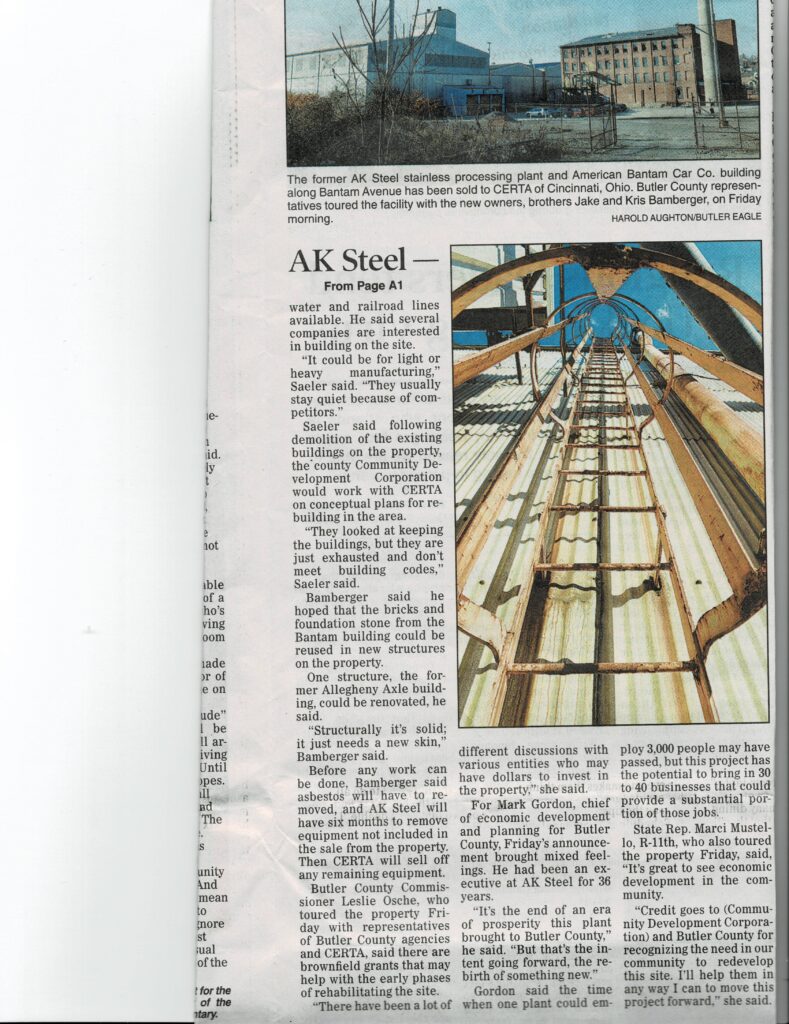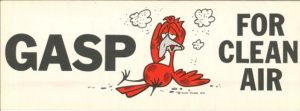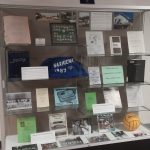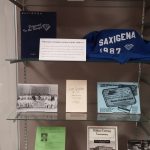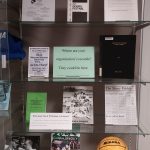Author: Amy
Madoff Tumblr Post
This post is just a placeholder for media used in the following post: http://pittarchives.tumblr.com/.
LIS 2674 video
The intent of the video is to show a hypothetical conversation between a user and an archivist. I’m not sure how successful it is, but the slides are good enough to record another track over at a later date.
So you want to be an archivist, eh?
Ok, maybe you don’t want to be an archivist (or you already are). Honestly, I’m only writing this blog for 3 people: me, my Public History professor, and the archivist I work for. I’m writing this to journal what I’ve done and need to do for a ginormous donor outreach project I thought was a great idea last semester. 😉
What has been done:
- Created a working bibliography for reference:
- Gelfand, Aleksandr. “Quidditch, Zombies and the Cheese Club: A Case Study in Archiving Web Presence of Student Groups at New York University.” Journal of Contemporary Archival Studies 2, no. 1 (2015): 1-12. http://elischolar.library.yale.edu/jcas/vol2/iss1/5/.
- Passoneau, Sarah, and Michele Christian. “Participant Learning in an Archival Education and Outreach Program to Fraternities and Sororities: An Implementation of Evidence-Based Librarianship and Information Science.” RBM: A Journal of Rare Books, Manuscripts, and Cultural Heritage 14, no. 2 (September 21, 2013): 92-110. http://rbm.acrl.org/content/14/2/92.full.pdf+html.
- Purcell, Aaron D. Academic Archives: Managing the Next Generation of College and University Archives, Records, and Special Collections. Chicago: Neal-Schuman, 2012.
- Samuels, Helen Willa. Varsity Letters: Documenting Modern Colleges and Universities. Lanham, Md.: Scarecrow Press, 1998.
- University of Pittsburgh. Student Organization Records Toolkit (SORT) @ Pitt Archives. December 5, 2015. http://pitt.libguides.com/SORT.
- Williams, Joseph A., and Elizabeth M. Berilla. “Minutes, Migration, and Migraines: Establishing a Digital Archives at a Small Institution.” American Archivist 78, no. 1 (Spring 2015): 84-95. http://dx.doi.org/10.17723/0360-9081.78.1.84.
- Over Winter Break, created a display in Bailey Library’s lobby as a soft launch to the campaign.
- Developed outline for speech and accompanying PowerPoint.
- Held several planning meetings with University Archivist.
- On January 31, 2017, accompanied University Archivist to Spring Organization fair at the Smith Center and spoke to many representatives about the Archives and donation.
- February 21, 2017: Met with the Program Coordinator for Greek Life and Student Organizations at CSIL. CSIL offered to assist with advertising the promotion after I draft an email and flyer.
- Determined preliminary date and location for presentation: April 4, 2017, Common Hour, at the Smith Student Center… probably one of the smaller meeting rooms on the 3rd floor. Room side is dependent on number of confirmations received.
- Created RSVP page to be found at sruarchives2017.wufoo.com. Site will go live after Spring Break.
Still to do:
- Draft advertisements for distribution to Organizations & academic honoraries, whose advisors are listed in the Academic Honors Convocation program.
- Choose items to include within PowerPoint, and actually write it.
- Create Proposal and & rubric for Public History professor so I can be properly graded on this project.
Project in Progress
For my Omeka exhibit, I will draw upon a personal collection of grave marker photos to examine the changes in grave markers over time in Butler County, PA. The exhibit will discuss the differences between religious and secular cemeteries, the designs and compositions of markers from the early 19th century to the present.
I will use photos of markers, maps of the grave locations, and textual sources, along with original text, to create this display. I hope to explain why changes in design and composition evolved over the past 200 years. Specifically, I would like to use Neatline to create a map where users can hover over pinned locations to see a photo and interpretive text. Ideally, I would like to integrate a timeline or some way to group markers by composition, design, or date… which I can’t currently remember how to do.
Honestly, I have no idea how to make this work, but I will come up with something & it will somehow all make sense by the due date.
Whatever happened to the Lower Hill?
For this assignment, I chose an 1872 map of Wards 5, 7, and 8 in Pittsburgh. I specifically chose this map because the area, known currently as the Lower Hill District, underwent exceptional changes in the mid 20th century. The residential and small business neighborhood was cleared out for development of the Civic Arena. Residents argue that the switch from residential to entertainment and parking continues to have a devastating effect on the Hill District nearly sixty years later.
Certainly a lot has changed for the area in 140 years. However, most of those changes were from the Renaissance period of the 1950s and 1960s. The PPG Paints Arena, which replaced the Civic Arena which was the cause of the “redevelopment” of the Lower Hill, and parking lots take up a great deal of the area. The Crosstown Boulevard (Interstate 579) was added later, but the damage had already been done to the Lower Hill.
One of the points I used in the rectification was the County Courthouse. It has remained in the same place. Other control points were more difficult to find. I used three different intersections to fully line-up the maps. It is nearly impossible to use points in the center of the map due to the incredible changes that have occurred.
The original purpose of the 1872 map was to show property ownership and location. Specifically, I believe that these were used for tax information. Further information about the maps can be found here.
I really enjoyed this assignment. It has many uses in digital history, especially in places that have changed dramatically over time. I would like to make another comparative map of the same area, but with a later Hopkins map that is from the 1930s to see what happened to the Lower Hill closer to the time of its destruction.
The “We’ve done it this way for years” post
Today’s assignment in Digital History was an introduction to Zotero citation management. Zotero is freeware that integrates browser and Word plugins to a standalone interface and provides cloud storage. Basically, it’s a hybrid of Evernote and EasyBib that allows direct importation to Word… which already has its own reference management module.
But is it easier than using several platforms for citation management? After the initial learning curve, yes. Of course, keeping all of your research eggs in one basket is always a way to tempt fate. I prefer to backup to several areas as a rule, and Zotero could lull a researcher into a false sense of security.
While playing around with the platform, it is easy to tell that Zotero was designed primarily for electronic sources. Adding physical sources is not nearly as easy. This could be remedied with a mobile app or even laptop camera integration for scanning ISBN barcodes. The inability to easily add hard copy could be problematic for specific types of research.
Zotero is a very solid citation management platform. It does a lot in one place and would be an excellent addition to a Research Methods class. Personally, the lack of an easy way to add physical sources and the fact that I have a system that works well have not convinced me to make the jump to Zotero.
First!
Welcome to Fountain Archivist. It is not about fountains. If you came here looking for fountains or even Fountain, I am sorry to disappoint you. The domain is a bit of a misdirect, as it’s derived from a translation of my last name.
This blog and page are an assignment for Dr. Aaron Cowan’s Digital History class. The first post of the blog is to discuss what has been learned in the class thus far and a plan for this very thin slice of the Interwebs. The class has been a very good review of the history of computing. We also touched upon the various types of current digital history projects, such as New York Public Library’s Emigrant City and Cleveland State University’s Cleveland Historical. I’ve been a fan of crowdsourcing since the late 1990s, but the increasing use of social media in digital history projects is a facet I hadn’t necessarily considered. I haven’t really considered how I will use this space or even if I will maintain it past the end of the semester. It would be nice to possibly use it as an alternate repository for my genealogical research. I just may use it as a private storage area and backup.

